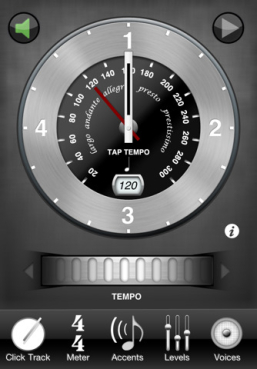
3 Reasons to Use a Click Track
There are some songs/recordings where it makes sense to ditch the click track and let the tempo breathe a little bit. However, for most of the recording work I do, I always try to use a click track. Here are three reasons why:
1. Protection against recording at the WRONG tempo
Ever play music live? Of course you do. Ever listened back to recording of your live playing? Most musicians play songs faster live than they rehearse them. Drummers often speed up for the chorus. And the next chorus and next. In the studio and on stage even, a click track lets me establish the correct tempo, and ensure that all the takes are recorded at a consistent, stable tempo, rather than too fast.
2. Copy, Paste, Loop
Do you want to use all sorts of loops in your song? Do you want to be able to copy and paste a performance from one section of the song to another? For example, sometimes I’ll take a guitar part from the second chorus and move it over to the first chorus. Without the click track, there’s no way the different sections of the song would be at the same tempo. Using a click track essentially lets you record everything to a grid. Once it’s recorded, it can be moved around without worrying about tempo changes. This can open the door to all sorts of creative options.
3. Multiple Takes
When you have that very first tracking session for a song — whether it’s drums, guitars, piano, whatever — you typically want to record multiple takes of each part, right? That’s what I do. I’ll record 3-5 full takes of the acoustic guitar, then I’ll go in and comp together the best parts of each take into one master comp track.

